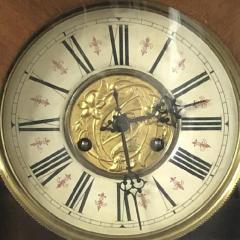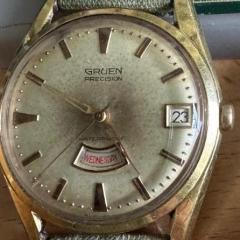Smiths English Clocks Ltd Westminster Chime
-
Recently Browsing
- No registered users viewing this page.
-
Topics
-
Posts
-
Hi All I’m Mark a new member from the UK. I have a long standing interest in clocks and very recently pocket watches. I ended up here after purchasing a minute repeater in a rolled gold hunter case and looking forward to seeing repair advice on this. I hope to have lots of fun with my new found interest and I look forward to hearing from you soon. Thanks Mark 👍
-
By Neverenoughwatches · Posted
Any way to fix dials to movements you can think of and more has been tried Glen. The dial is maybe not original, to the watch. The problem with dial dots, if the adhesive gets for whatever reason, they ease up on holding the dial in place. Attaching feet is a nice permanent solution, if you want to go to the trouble of it. Its a tricky process with risks however you do it. I'm not sure I've seen dials without feet before, but probably. Often they are there and only push on to the movement with dial feet screws. -
Hi everyone, An update. First of all, I would like to thank you for the information provided, it was very useful help. I was supposed to take more photos but with the beginner’s stress I ended up forgetting. The watch was assembled in a Timex factory in Portugal (my country), 50 years ago (a piece of history that no longer exists) I followed the procedure described in the technical manual until the part of removing the hands (were misaligned) . At that time I noticed that the Date lever was out of place. Once placed correctly, everything was ok and the date started to change correctly. Since I had removed the hands, I adjusted the change of day and day of the week, which was changing too early and cleaned the dial. At this point I thought everything was ok, but during tests to check if the day and date were changing at the correct time I noticed that the movement was slightly loose (the movement wobbles in relation to the Date Frame on the opposite side to the crown). I ended up closing the watch and leaving it like that and trying to use it. It turns out that although, when the day and date were set, everything worked as expected the next day the date didn't change. I opened it and I noticed that the Date Lever moved back out of place again (photo). My conclusion is that a screw is missing (5145/1 - Pillar screw (short)) and this creates a gap between the movement and the Date frame, causing the Date lever to move out of place with normal wrist use. Over the weekend I will try to see if everything works correctly without wearing it on my wrist. If it is confirmed that a screw is missing, can anyone tell me if it is the same one used to screw in the rotor? If that's the case, my best guess is to remove one of the screws from the rotor, take it to the watchmaker and see if he can get me one of identical dimensions. Any other ideas on what could cause the Date Lever to go out of place? Regards Vasco PS - Placing the second hand was a pain in the A**







Recommended Posts
Join the conversation
You can post now and register later. If you have an account, sign in now to post with your account.
Note: Your post will require moderator approval before it will be visible.